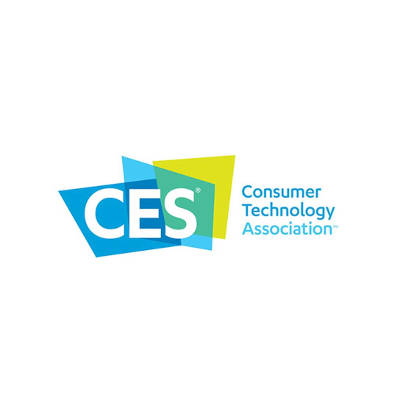VR and AR Made a Scene at CES 2018

The International Consumer Electronics Show (CES) is designed to showcase new technology and products to the world, with a focus on industry professionals and companies that want to showcase their latest projects. The show, which was held in Las Vegas in January, saw the introduction of many consumer products, but the ones that showed off new virtual and augmented reality capabilities made a considerable impact on attendees.
Hype has been building over VR and AR for years now; hype which has failed to meet the considerable expectations placed on the technologies. It turns out that these innovators are coming up with valuable new ways in which to leverage these rather complex technologies.
Virtual Reality
Even now, virtual reality is a huge deal. Manufacturers are still finding ways to develop both hardware and software for it specific use. However, the problem that developers are finding is that VR has taken too central of a role in the entertainment industry compared to its more practical or business-oriented purposes. In the future, manufacturers are hoping to create valuable applications for the technology to keep the demand high.
In an article for Forbes, Charlie Fink showcases that VR will most certainly show a profit, but the market is still only at around $ 2 billion per annum. Judging from previous trends set by color TV, VCR, PC, cell phones, and the Internet, it’s not beyond the realm of possibility that the standard consumer will see VR as a worthwhile investment before too long. However, Fink points out that “…before VR companies can understand how consumers want to spend, they need to cater to how consumers want to consume.”
Even though it’s not as profitable as other technologies at the moment, VR had a huge presence at CES. New technologies in VR ranged from novelty to necessity, including the HTC Vive Pro and an analytical tool called Looxid. Looxid allows for marketers and analysts to track eye movement and brain activity during use, providing information that should improve the way businesses understand consumers. For a more practical tool, the Meshroom VR headset can turn CAD drawings into legitimate 3D prototypes that can be effective for the use of architecture or engineering.
Regardless, even though VR has been around for quite some time, it is still a developing and volatile technology. It’s clear that it will be worth the investment in the near future–particularly when more useful applications are developed that can take advantage of it.
Augmented Reality
Compared to virtual reality, augmented reality is a bit more tame and less of an attention-grabber. Instead of transporting the user to a virtual world, augmented reality adds virtual elements to your surroundings. The easiest example to help explain this technology is to add a top-down overlay interface to your field of vision, allowing for the viewing of information or analytics at a glance. Yet, AR has found plenty of use in the real world already, from statcasts in the sports world to smartphone games like Pokémon Go. Some developers, like Google and Apple, have invested considerably in the creation of augmented reality applications, and it’s only going to improve in popularity as more companies create effective ways of leveraging AR.
At CES 2018, AR was a prominent force. Manufacturers are finding new and improved ways to take advantage of displays. Some of the more notable products include Vuzix Smart Glasses with Alexa–much like Google Glass, but with Amazon’s Alexa built into it. WinRay’s AR windshield is another device you should keep your eye on. This windshield can display directions, roadside information, and even basic car functions. Even Apple’s iOS 11 comes with built-in AR.
What are some ways that you can think of to take advantage of AR and VR? Let us know in the comments, and be sure to subscribe to our blog.
The Fun, the Fit, and the Weird: Our Review of CES 2018

From the fun, to the fit, to the just plain weird, CES 2018 had quite a bit to show off. The Consumer Electronics Show is a chance for the technology industry to show off what they have to offer, for better or for worse. Today, we’ll go over some of the highlights that graced Las Vegas this year.
The Fun
One of the (quite literally) biggest products showcased was Samsung’s ‘The Wall,’ a new television set that measures 146-inches diagonally and leverages a similar technology as scoreboards in sporting events, albeit at a scaled-down size. While the Wall has some hurdles to overcome, time will tell if Samsung is able to iron them out.
Another technology that has exploded in popularity is that of voice-responsive gadgets and connected homes. In the past, Amazon’s Alexa device has made quite a splash at CES as the services that can be controlled with voice commands piled up. This year saw a few more of these services added to Alexa’s recognized commands, expanding the utility the assistant has to everyday life.
Finally, there was also technology there meant to benefit older generations. Most notably, the digital companion ElliQ. ElliQ can assist a user in many ways customized to meet the needs of its older target, reminding them of upcoming appointments and even carrying on conversations with a user.
The Fit
Fitness makes up a considerable portion of the consumer technology market, so it only stands to reason that CES would be the place to showcase the latest and greatest in fitness technology.
Perhaps most notably, Peloton broke from their usual offer of connected indoor cycles that stream fitness classes directly to the bike, to a connected treadmill that also allows a runner to access a library of pre-recorded classes or tune in to a live class. The Peloton Tread, as it is called, will feature pure running/walking fitness classes as well as some strength and circuit classes in its library.
The Spire Swim Tracker also made waves as the first smart swimsuit, automatically tracking your performance metrics from the time you don the suit (with tracking tag embedded). From there, it automatically syncs with the Swim.com app. You don’t even have to charge the tracking tag, as it is meant to last longer than the suit.
It also seemed that virtual reality is finally hitting the gym, as Black Box gyms will soon feature their own VR capabilities. Taking the monotony of a resistance workout and incorporating it into a video game, Black Box VR offers a full-body workout in 30 minutes while satisfying the competitive streak in all of us.
The Just Plain Weird
Then there were the devices that made sense to a point, but were ultimately best suited for a niche audience. For instance, to help people with bad habits overcome them, there’s Keen. Keen uses an inertial measurement unit sensor to identify a learned gesture, and vibrates. This assists the user in catching themselves indulging in a bad habit, making them more likely to break said habit.
There was also the Moodo, a diffuser that you control with either Alexa or a smartphone app to release scents into the air. In addition to these gizmos, CES also saw a self-driving store and a ping-pong-playing robot. Speaking of robots, there was the Somnox Sleep Robot, a bean-shaped lump that breathes and snuggles up to you to assist you in falling asleep.
Which of these products are you most interested in seeing, and using? Let us know in the comments!
4 Resolutions to Keep Your Business Secure in 2018

With every new year comes great new opportunities, and 2018 is no different. However, change can be a good thing, and with a new year also comes more perspective and knowledge that you can use to make considerable improvements to the way you run your organization. Here are four ways that you can use developments in cybersecurity to help your business succeed in the new year.
Monitor Endpoint Security
One of the first things you need to check is how secure your endpoints are. By endpoints, we’re talking about any employee devices or workstations that access your business’ network. You need to ask yourself if your employees are using these endpoints as securely as possible. Do they have permissions that they need (or don’t need)? Do they misuse any permissions that they do have? These are all questions that will clue you in as to how secure your endpoints really are.
Your network security starts with your end users, and any risky situations that they find themselves in can reflect on your network. Your employees should understand how their actions can impact the way that your organization functions as a whole. In the same train of thought, your employees should understand the proper way to use devices, usernames, and passwords, so that hackers can take advantage of as few endpoints as possible. If you lose any employees, be sure to revoke their permissions so that you minimize the risk of unmonitored accounts becoming dangerous endpoints.
Apply Updates and Patches
One of the best ways to ensure network security is to keep your patches and security updates implemented as soon as possible. Cybercriminals and malware developers are always trying to overcome the security of software solutions commonly used by businesses and individuals. To counteract these malicious intentions, software developers are always fixing flaws that surface in a (hopefully) timely manner. Unless you implement these patches and security updates, you’re putting your business at risk.
Patching and updating your software solutions is the only way to make sure that your company is as secure as possible from threats. If you don’t take action now, you could very well be putting your company at risk of a data breach. You need to regularly patch your software solutions to make sure that hackers can’t take advantage of the latest bugs to infiltrate your organization.
Keep a Positive Attitude
Some of these resolutions might feel like you’re focusing too much on the negative, but there is always room to focus on the positive. Use your imagination a little bit and focus on what kinds of attacks you could potentially see against your business in the future. How would you protect from these attacks? You always want to make sure that you’re considering the best-case scenario.
To attain this standard, you want to take an honest look at what you’ll need to go one year without a cyber attack. You should then work toward this idealistic goal.
Cover Your Basics
Forgetting about simple security tactics can be the downfall of your business. Be sure to always follow password security requirements so that you can keep threats out of your network and accounts. Furthermore, you should implement two-factor authentication to make each hacker’s job even more difficult.
You should always be keeping your team in the loop, as well, ensuring that they know about any changes to procedure or new solutions implemented. Do you have any questions about how to optimize security in the new year? Let us know in the comments.
2018 is Expected to See $96 Billion in IT Security Investments

If you were considering increasing your investment into your information security in 2018, you certainly aren’t alone. Gartner released a report that indicated a considerable rise in plans to invest in key security considerations.
Closer analysis of these considerations shows that businesses around the world are paying attention to essential security requirements that have seen relatively smaller portions of budgetary spending in the past, as well as increasing their security investments as a whole. For example, while identity access management sees the smallest amount invested, it is anticipated that there will be an increase in spending of 9.7 percent between 2017 and 2018.
In addition, spending on network security, security services, and infrastructure protection is expected to rise by 6.7 percent, 11 percent, and 7.7 percent, respectively.
Why? Simply put, 2017 was a rough year, in terms of security breaches and other attacks. Worldwide events, like WannaCry and NotPetya, have shown the importance of comprehensive network security preparations. Another recent reinforcement of this lesson came when the Equifax breach came to light. As is usually the case when a certain something hits the metaphorical fan, businesses are taking notice.
However, if these projections prove accurate, it may still not be enough.
With technology becoming more and more critical to business operations with every week that goes by, cybersecurity is only going to become more important–important enough that an overall spending increase of 8% might not be enough of an investment. After all, technology is becoming a factor in more and more elements of life, which gives a botnet more ammunition–and that’s just one example.
Fortunately, many businesses are also planning on outsourcing their security needs to experienced and trusted professionals. Spending on that is expected to increase by 11%. Will some of this increase be due to your investment?
If it is, reach out to Catalyst Technology Group first. Our IT professionals are adept in ways to keep your business secure, as well as ways to improve your business’ performance. Give us a call at (317) 705-0333 for more information.

